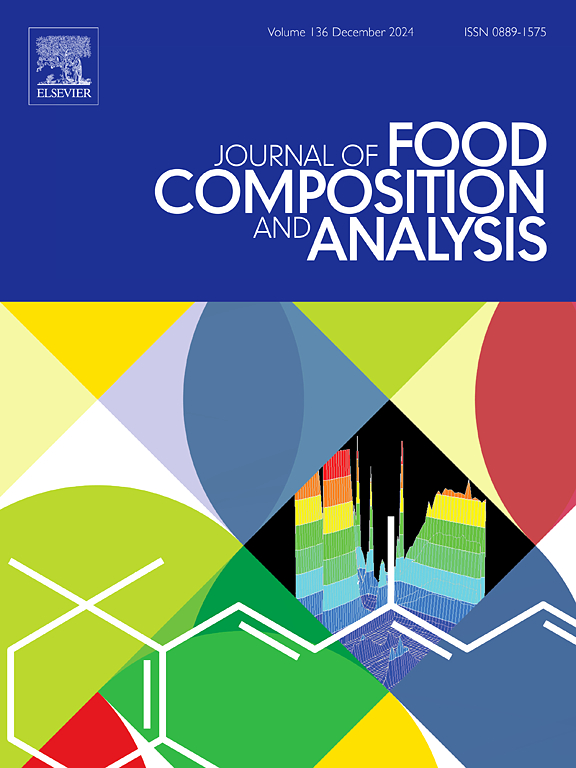Sensory directed analysis for key odor-active compounds in by-products flavorings enhanced by enzymatic hydrolysis and Maillard reaction
IF 4
2区 农林科学
Q2 CHEMISTRY, APPLIED
引用次数: 0
Abstract
This study explores the enhancement of chicken bone flavor through enzymatic hydrolysis and the Maillard reaction, providing insights into the formation and characterization of key aroma compounds. Chicken bone extract was hydrolyzed using Protamex™ and Flavourzyme™ to obtain chicken bone enzymatic hydrolysate (CBEE), which was subjected to the Maillard reaction to produce Maillard reaction chicken flavoring (MRCF). The volatile compounds in CBEE and MRCF were comprehensively analyzed using solvent-assisted flavor evaporation (SAFE) and solid-phase microextraction (SPME) combined with two-dimensional gas chromatography–olfactometry–mass spectrometry (GC×GC-O-MS). A total of 40 odor active compounds were identified and their odor activity values (OAV) were calculated. Among them, 11 compounds contributed significantly to the overall aroma (OAV ≥ 1). Key contributors, including 2-methyl-3-furanethiol, furaneol, 5-(2-hydroxyethyl)-4-methylthiazole, and maltol, were confirmed through aroma recombination and omission experiments. The results highlight that the Maillard reaction significantly enhances the richness and complexity of the meaty and roasted aromas, driven primarily by the increased levels of sulfur-containing and heterocyclic compounds. This research provides a scientific foundation for the industrial development of meat flavorings from chicken bone by-products and offers valuable guidance for flavor optimization.
求助全文
约1分钟内获得全文
求助全文
来源期刊

Journal of Food Composition and Analysis
工程技术-食品科技
CiteScore
6.20
自引率
11.60%
发文量
601
审稿时长
53 days
期刊介绍:
The Journal of Food Composition and Analysis publishes manuscripts on scientific aspects of data on the chemical composition of human foods, with particular emphasis on actual data on composition of foods; analytical methods; studies on the manipulation, storage, distribution and use of food composition data; and studies on the statistics, use and distribution of such data and data systems. The Journal''s basis is nutrient composition, with increasing emphasis on bioactive non-nutrient and anti-nutrient components. Papers must provide sufficient description of the food samples, analytical methods, quality control procedures and statistical treatments of the data to permit the end users of the food composition data to evaluate the appropriateness of such data in their projects.
The Journal does not publish papers on: microbiological compounds; sensory quality; aromatics/volatiles in food and wine; essential oils; organoleptic characteristics of food; physical properties; or clinical papers and pharmacology-related papers.
 求助内容:
求助内容: 应助结果提醒方式:
应助结果提醒方式:


